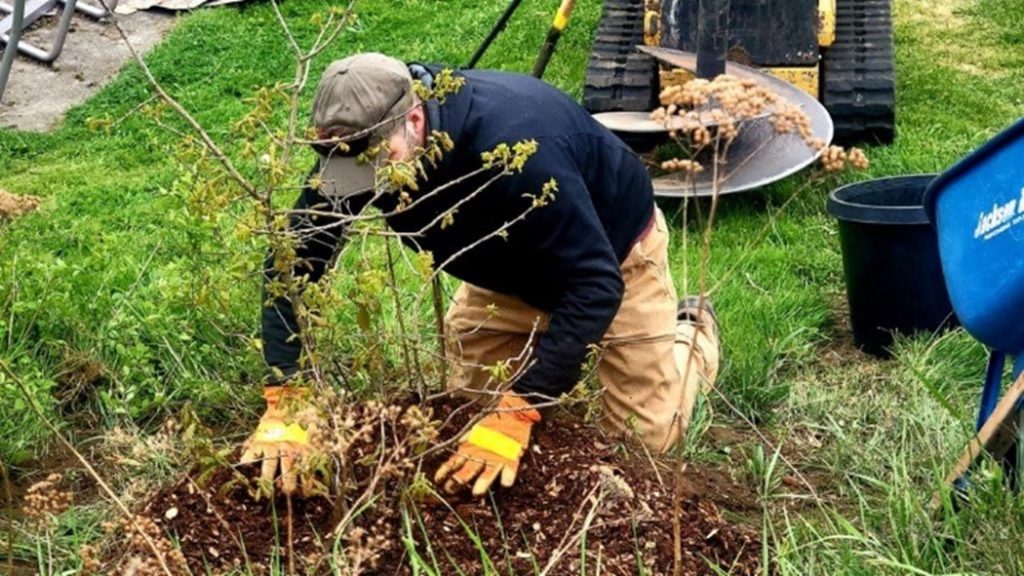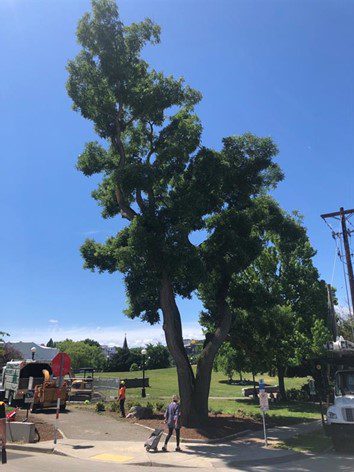
By Nicholas Johnson and Todd Burley
While walking through your favorite park you may come across a pile of mulch where there used to be a tree. What happened? You liked that tree! Isn’t Seattle Parks and Recreation (SPR) trying to add trees, not take them down?
Maybe you notice a large cedar tree with a lot of dead branches and wonder what is happening to it. You remember it being so healthy before. If you are looking for answers, just ask SPR’s arborists!
SPR has a dedicated team of nine arborists who manage an estimated 500,000 trees in developed parks and green spaces! These professionals are highly credentialed, with certifications such as: ISA Certified Arborists, ISA Municipal Specialists, ISA Risk Assessment Qualifications, ASCA Tree and Plant Appraisal Qualifications, and ISA Board Certified Master Arborist. This is a top-notch team!
SPR’s Tree Crew is well trained and their knowledge of trees in Seattle’s parks is truly impressive. A foundational task for these arborists is to inspect trees in our parks for disease, damage, and to prescribe maintenance. When contacted with a concern regarding a specific tree they are responsive and put their extensive training into practice to provide an accurate assessment of the tree and site conditions. Daily, they are assessing trees for health and safety considerations and carrying out complex maintenance tasks.
Since 2015, this team has been maintaining an inventory of the trees they inspect. This inventory includes characteristics of the tree such as height, diameter, Genus/species, health, maintenance needs and data associated with failures. Over 26,000 trees have been entered into their database. This includes trees that have failed from wind storms or natural causes. We believe that SPR’s tree failure database is the largest in the world. (Note: “tree failure” is a term used to define a structural failure or physical breakage of a tree’s trunk, branches, and/or roots).
Urban forests have a host of challenges. Invasive insect pests, fungal diseases, soil compaction, and lack of genetic diversity are some of the challenges that come with managing an urban forest. In addition, Seattle has experienced repetitive summer droughts since 2014. These atypical droughts are having a cumulative effect upon Seattle’s trees, making them susceptible to disease and decline. Check out this recent article on sooty bark disease.
In response to changing environmental conditions, this team is pivoting quickly to plant trees that are more tolerant of the long periods of drought and excessive heat that are expected due to climate change. They have also increased the care that newly planted trees receive, including additional years of watering during establishment periods.
Before SPR’s arborists consider removing a tree and replacing it, they first work hard to safely retain old trees. This can often be accomplished with targeted pruning or supporting a tree while it retrenches itself. Retrenchment is a process where a large tree sheds much of its crown and often becomes a small and gnarled one. These are often the most interesting trees!
If a tree must be cut down to protect people, property, or to maintain accessibility, SPR arborists often leave a portion of the tree standing to become a wildlife snag. This practice is common particularly in our natural areas and occasionally in developed parks where deemed appropriate.
In fact, wherever possible this team leaves every part of a removed tree they can onsite. Sometimes this means leaving wood chips, sometimes logs. Leaving the woody debris from trees onsite allows nutrients essential to soil health to cycle back into the ecosystem.
Trees provide a huge benefit to our city. And our arborists work daily to promote a healthy and resilient urban forest. This is just another way SPR fulfills its vision of Healthy People, a Healthy Environment, and Strong Communities.




